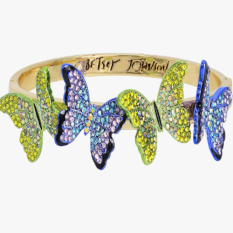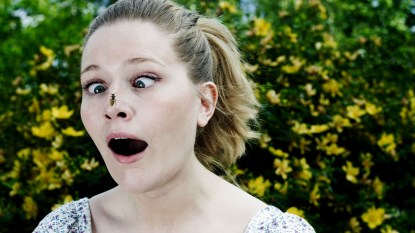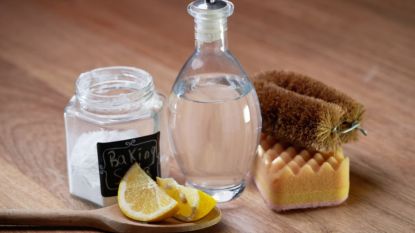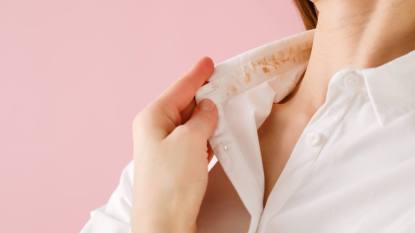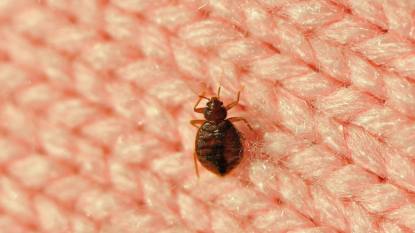How to Remove Bleach Stains: Laundry Pros Reveal Easy Tricks That Can Save Clothes
Plus, what you can do with your clothes if they are past the point of no return!
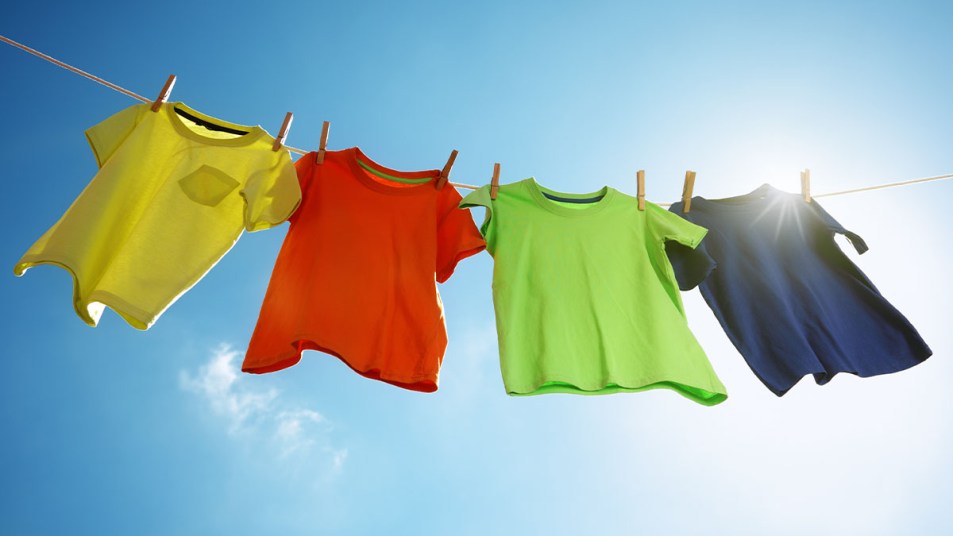
Using bleach can be kinda tricky. While it definitely has its pluses in getting whites white, it’s a finicky product, and when not used and stored carefully, it likes to leave a mark. The good news? Bleach stains aren’t actually as permanent as you think. Everything you need to know about how to remove bleach stains is down below.
Why bleach causes stains
Time for a science lesson on a little thing called oxidation. “Bleach causes a chemical reaction that alters the molecular structure of certain substances,” Elena Ledoux, co-founder of Superb Maids, explains. “In this case, bleach reacts with the molecules that give fabric its color.” This reaction breaks down these molecules, making them unable to absorb light in the same way they did before. As a result, the color either fades or disappears entirely, leaving what we perceive as a stain.
However, it’s worth mentioning that not all bleaches are made equal. According to Carol Mehas, founder and CEO of arbOUR Products, the two main categories are oxygen bleach and sodium hypochlorite bleach. “The former is most effective in warm-to-hot water and generally gentler for maintaining whites, while the latter is a household disinfectant — which, when used properly, can be suitable for some laundry situations.” Read on to learn how to remove bleach stains.
Why bleach causes yellowing
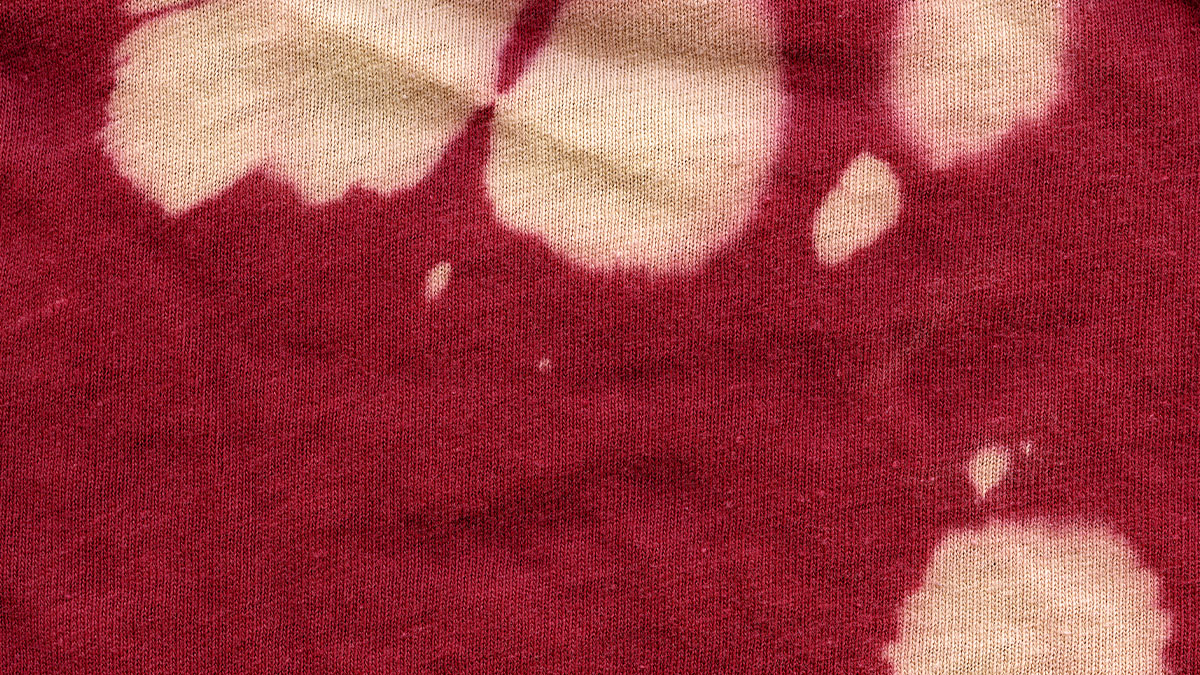
Bleach has a lot of superpowers, one of which is yellowing (even with white fabrics). “One of the reasons bleach turns some fabrics yellow is because it breaks down dyes, leaving behind yellow compounds,” Ledoux says. “This reaction is more common in natural fibers like cotton or linen, which may contain substances that react with bleach.”
Mehas says many synthetic fabrics aren’t immune to the result either, though the reasoning is different: “Bleach chemically breaks down the ‘rubberized’ technology in fabrics, thus putting extra chemicals in the water and soaking the entire fabric with a yellow tint.”
The water’s pH balance and impurities can also contribute to this yellowing effect.
How to prevent bleach stains
The most important key to prevention? Reading the fabric care labels. “Factors such as the makeup of the fabric (like cotton or wool) and finishes (like spandex or tech) will guide you toward which products to use,” Mehas explains. “Also, read the directions for using the bleach or any stain remover beforehand. You’d be surprised to know that most things aren’t automatically compatible, so it’s worth doing before ruining your clothes and linens.”
Once that’s done, Mehas recommends testing a small area first. “And if you’re using bleach in a washing machine, you always want to spread it evenly in the water, as any concentration of bleach will be sure to oxidize any color it touches and you’ll end up with the dreaded spots of bleach misuse,” she finishes.
Also follow these top tips from Ledoux:
- Dilute bleach as directed and use it in well-ventilated areas.
- Wear old clothes or protective gear when handling bleach.
- Quickly rinse off any spills with water.
- Keep bleach away from colored laundry and surfaces.
- Store bleach containers securely to prevent leaks.
- Rinse areas thoroughly after cleaning with bleach.
How to remove bleach stains
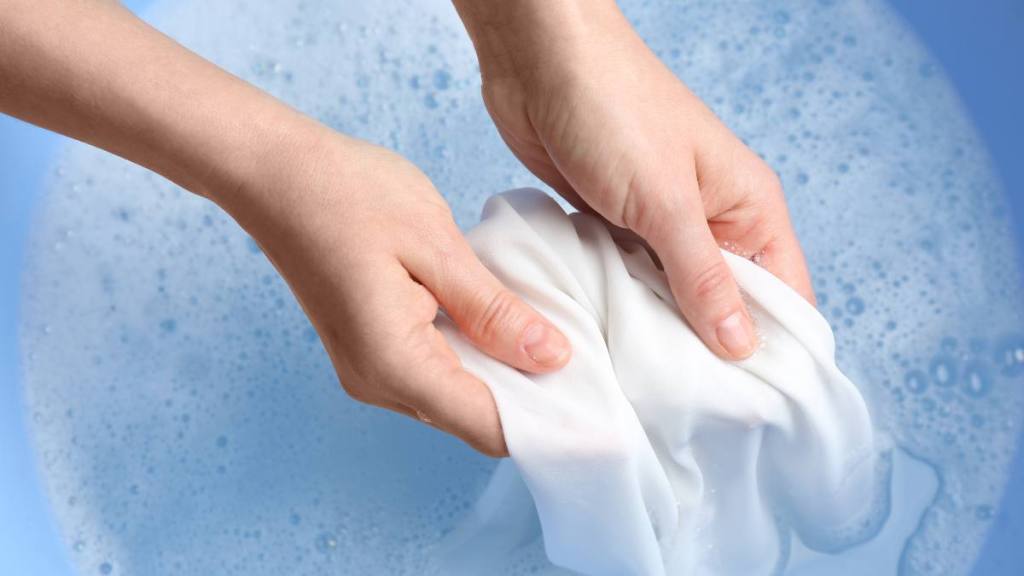
Did you just splash some bleach on your favorite black shirt? Take it to your sink ASAP. While you can’t remove a bleach stain from dark clothing once the color has been removed, there are ways to stop it from happening if you act fast! “Treating a new bleach stain involves quickly rinsing it with cold water to minimize further damage,” Ledoux explains.
Next, neutralize the bleach. This is a critical part of the process because if you don’t neutralize the bleach, it’ll continue to cause odor and yellowing issues. These items work well:
Sodium thiosulfate: When applied to the stain, this compound often used in pools, aquariums and more, lowers both chlorine and pH levels, in addition to neutralizing bleach.
Lemon juice: Mehas advises mixing up equal parts lemon juice and water, then using “a soft toothbrush to gently get in-between the fibers — rinse and repeat as needed.”
Baking soda: Similar to lemon juice, Ledoux says “a paste of baking soda and water will have the same effect if you let it sit for 10 minutes, then rinse it off.”
How to salvage clothes if the bleach removed any color
Unfortunately, if you didn’t act fast, “once color is chemically removed from fabric, it can never be recolored to its original state,” Mehas says. That doesn’t mean you can’t put your item to work in other ways.
Try tie-dye: According to Ledoux, it’s likely that dying the fabric in all one shade won’t work because “the stained area might react differently to the dye.” Because of this, you may want to try your hand at tie-dying instead, where variation is intentional.
For more on tie-dying with bleach, watch the video below!
Get crafty: Other ways to use your creativity? Employing fabric markers, paint, embroidery and sewed on patches or appliques are all fair game.
Put buttons to work: “For blouses and pants that are completely ruined, you can remove the buttons to use as replacements when repairing other clothing,” Mehas recommends.
Find a new use: Use a button up as a painting smock, or a sheet as a tarp. The possibilities are endless.
Splice and dice: Bleach stains don’t ruin entire fabrics — just parts of them. Grab some scissors and turn your garment or linens into rags, pouches and more.
How to remove yellow bleach stains from white clothes
“Unfortunately, there’s no easy fix for yellowing from bleach, and sometimes the damage isn’t able to be corrected,” Mehas explains. “Quick action is needed if there’s any hope of getting the yellowing corrected.” Here’s what you can try to get rid of it.
Hydrogen peroxide: For true white items — not beige or cream — Mehas says if it has caused yellowing already, you can apply hydrogen peroxide with a clean white cloth, gently massaging around the yellowed area.
Sun exposure: To naturally lessen the discoloration, Ledoux suggests simply putting the item out in the sun.
White vinegar: This is a method you should only use if you’re 100% confident that the bleach is gone, as mixing the two can create chlorine gas, which is deadly.
Related: 13 Brilliant Uses For White Vinegar Guaranteed To Make Your Life Easier
Color remover: Just for white items, color remover like Rit Color Remover (Buy from Amazon, $6.12) does exactly what it sounds like: removes color. “Use only as directed and test it out in a small area first as you can cause further damage,” Mehas says.
Fabric whitener: A whitening product like OxiClean White Revive Laundry Whitener and Stain Remover Powder (Buy from Amazon,$8.52) can be effective, but Mehas warns that about following directions and testing first applies here too.
Dish soap: Dawn dish soap, to be specific. What can’t this multi-tasker do? Add a few drops to a bowl of warm water, mix it up, and dab the solution on with a clean white cloth. (Click here for more uses for dish soap.)
Related: How to Get Yellow Deodorant Stains Out of Shirts —And the Surprising Pantry Staple That Works!
For more laundry tips, click through the links below!
Tired of Pulling Wet, Tangled Bedsheets Out of the Dryer? Try This TikTok Hack To Fix It
Extend the Life of Your Dryer, Ward Off Mold Just By Cleaning Your Dryer Vent
Pet Hair Stuck In Your Washer and Dryer? Here’s How To Remove It

